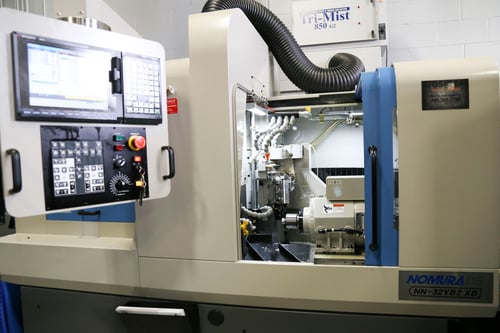
The characteristics of sliding headstock turning machines – AKA Swiss-style lathes – make them ideally suited for the long, unattended runs required for lights-out production. The primary advantage is that Swiss-style machines have a fixed cutting tool that machines bar stock close to the guide bushing through which the material is fed into the lathe. The workpiece, therefore, is better supported and more stable, so there is less vibration that can degrade cutting performance over time.
This assumes, of course, that the Swiss-style machine spindle, guiding system, ways ball screws and other components are precisely and sturdily constructed to operate reliably for long periods.
Equally important considerations for Swiss-style lathes used in lights-out production are:
Automatic bar feeders that have the capacity to hold enough bar stock for the required production volume, provide adequate bar support to aid in reducing vibration, and will reliably and continuously feed bar stock throughout the shift. The most advanced automatic, magazine bar feeders also have built-in Internet capability that can transmit data, including trouble alerts, to smart phones or remote computers, so there are no morning-after surprises.
Chip and coolant management systems that can handle the quantity and types of chips created throughout the shift, and automatically regulate coolant pressure, if necessary. Even the most reliable and efficient chip conveyor can be thwarted by something as simple as a discharge receptacle that hasn’t been emptied before the lights-out shift. With nowhere to go, the chips will backup and cause bottlenecks or even excessive cutting tool wear.
Adequate unloading of finished parts is also essential to prevent stoppages and to maintain part quality. Some turned parts can be simply discharged into a holding bin. In other situations, an automated system using a robotic arm can remove and place finished parts onto pallets. Another option, especially when surface finish is critical, is a vacuum unloader that literally sucks the part out of the lathe and into a special repository.
There are a number of other considerations when implementing lights out production, and it’s helpful to talk with someone who has hands-on experience with both applications and the latest technologies.


